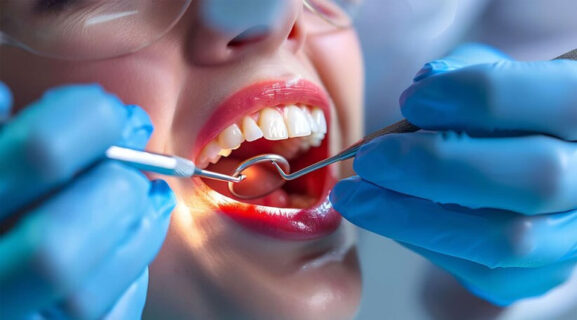Implant Level Technology for Enhanced Osseointegration
Dental implants have revolutionized restorative dentistry, offering a durable and aesthetically pleasing solution to missing teeth. A critical factor in the success of dental implants is osseointegration, the process by which the implant fuses with the jawbone. Recent innovations in implant level technology have significantly improved osseointegration, enhancing the success rates and longevity of dental implants. This article explores these advancements and their impact on dental implant procedures.

Understanding osseointegration
Osseointegration is the direct structural and functional connection between living bone and the surface of a load-bearing artificial implant. Achieving successful osseointegration is essential for the stability and longevity of dental implants. Various factors, including implant material, surface modifications, and surgical techniques, influence this process.
Key Innovations in Implant Level Technology
- Surface Modifications
Nanotechnology has enabled the development of implant surfaces that enhance bone cell attachment and proliferation. Nanostructured surfaces mimic the natural bone environment, promoting faster and more robust osseointegration.
Surface Coatings Surface coatings such as hydroxyapatite and bioactive glass are applied to implants to improve biocompatibility and bone bonding. These coatings create a favorable environment for bone growth, leading to quicker integration. - Material advancements
Titanium Alloys Titanium and its alloys have been the gold standard for dental implants due to their excellent biocompatibility and mechanical properties. Recent advancements have focused on improving the surface characteristics of titanium to enhance osseointegration further.
Zirconia Implants Zirconia implants are gaining popularity as a metal-free alternative to titanium. Zirconia offers high strength, aesthetic benefits, and biocompatibility, making it an attractive option for patients with metal sensitivities. - Innovative implant designs
Tapered Implants Tapered implants mimic the shape of natural tooth roots, providing better primary stability in soft bone. This design facilitates immediate loading and faster osseointegration.
Threaded Implants Advanced thread designs on implants increase the surface area for bone contact, enhancing mechanical stability and promoting better integration. - Enhanced surgical techniques
Guided Implant Surgery Computer-guided implant surgery uses digital imaging and planning tools to achieve precise implant placement. This technique reduces surgical trauma, improves accuracy, and enhances osseointegration outcomes.
MINIMALLY INVASIVE TECHNIQUES MINIMALLY invasive surgical techniques reduce tissue trauma and promote faster healing. These methods help in maintaining the integrity of the bone and surrounding tissues, facilitating better osseointegration.
Benefits of Improved Osseointegration
- Higher Success Rates Enhanced osseointegration leads to higher success rates for dental implants, reducing the risk of implant failure and associated complications.
- Shorter Healing Times Innovations in implant technology have significantly reduced healing times, allowing for quicker restoration and improved patient satisfaction.
- Increased Longevity Improved osseointegration contributes to the longevity of dental implants, providing a long-lasting solution for tooth replacement.
- Enhanced Aesthetics Advanced materials and techniques ensure that dental implants blend seamlessly with natural teeth, enhancing the overall aesthetics of the patient’s smile.
Challenges and considerations
- Cost Advanced implant technologies and materials can be more expensive, potentially limiting access for some patients.
- Technical Expertise Implementing these innovations requires specialized training and expertise, posing a challenge for some dental practitioners.
- Patient-Specific Factors Factors such as bone quality, oral health, and systemic conditions can influence the success of osseointegration, necessitating personalized treatment plans.
Conclusion
Innovations in implant level technology have significantly enhanced osseointegration, improving the success rates and longevity of dental implants. Advancements in surface modifications, materials, implant designs, and surgical techniques contribute to better outcomes for patients. Despite the challenges, these innovations represent a significant leap forward in restorative dentistry, offering patients more reliable and aesthetically pleasing options for tooth replacement. As technology continues to evolve, the future of dental implants looks promising, with ongoing improvements expected to further enhance patient care and satisfaction.



